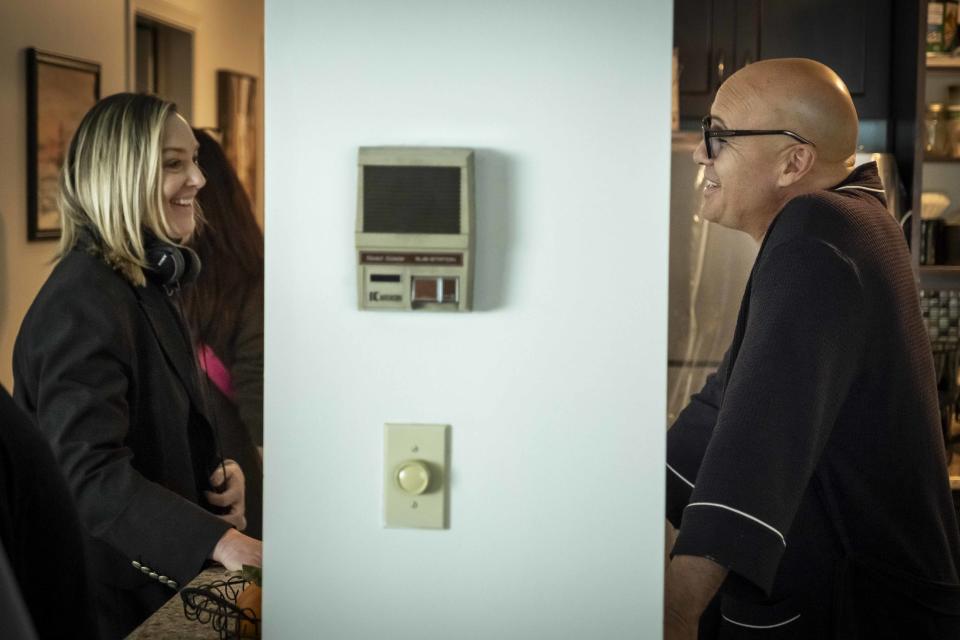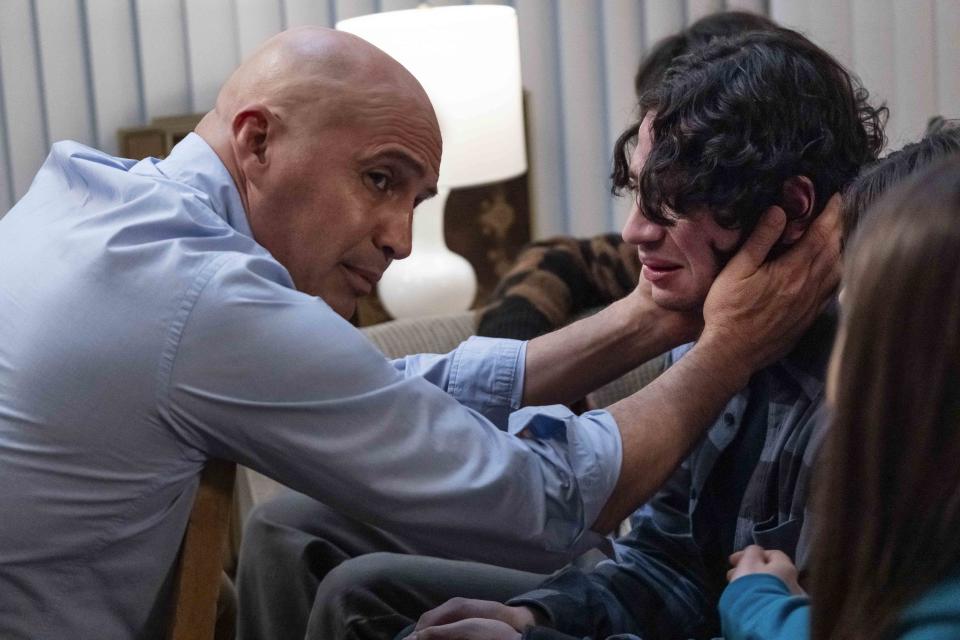For ‘Devil on Campus’ Director Elisabeth Rohm, Lifetime Was the Perfect Fit for Her Movie About the Sarah Lawrence Cult

In April 2019, New York magazine published “Larry Ray and the Stolen Kids of Sarah Lawrence,” a shocking account of a group of bright college students who fell under the influence of a classmate’s father and did everything he asked of them, no matter how vile — ultimately resulting in his incarceration for sex trafficking, extortion, and conspiracy. As a Sarah Lawrence graduate, director Elisabeth Rohm read the article with intense interest. “It could have happened to me,” she told IndieWire. “I felt so strongly about that.” Rohm immediately saw the potential for a compelling feature film, but it would take several years of script development and untangling of legal issues for the story to finally make it to the screen.
The result was worth the wait. Lifetime’s “Devil on Campus: The Larry Ray Story” is easily one of the best TV movies in years, a tonally complex and expertly directed crime film with an Emmy-worthy performance by Billy Zane in the title role. It’s the fourth in a series of thrillers that Rohm has directed for Lifetime that all transcend their limited resources and avoid the cliches often associated with movies of their type; working on tight budgets and schedules, Rohm has carved out a niche for herself as an auteur with a subtle and powerful approach to stories of violence against women that eschew both sensationalism and easy moralizing. (Her 2022 film “The Girl in Room 13” is more genuinely unsettling than most theatrical horror movies, let alone other Lifetime MOWs.)
More from IndieWire
'Interview with the Vampire' Just Dropped the Most Audacious TV Episode of the Year
'House of the Dragon' Season 2, Episode 2 Review: The Cost of War
While the three weeks of prep and 15 days of shooting that Rohm had for “Devil on Campus” were typical for Lifetime, the movie doesn’t feel like it’s straining against its limitations, largely because Rohm had been thinking about and working on the film for years. She initially approached Lifetime before Ray’s trial, but at the time, they were resistant, given the legal ramifications. Once Rohm recruited TV legal analyst Dan Abrams to help her navigate the loopholes and get her access to the trial transcripts and other documents, the network’s resistance eased — and it vanished completely when Ray was found guilty and sentenced to decades behind bars.
Once Lifetime said yes, Rohm was finally able to make an offer to Zane, who had always been her first choice to play Ray. “I had approached him a year earlier at a party when I was leaving and he was walking in,” she said. “I said to him, ‘Hey, I’ve got a movie and I’ve only thought of you for it for a couple of years now.’ He was very sweet and said, ‘Well, send it to me.'” It took some time after that before Rohm had a green light, but Zane was on board immediately and threw himself into the role, transforming his way of moving and speaking completely to disappear into the character of Larry Ray. According to Rohm, his charm and sense of humor were essential to what she was trying to get across about the cult Ray formed at Sarah Lawrence.

“Billy is incredibly seductive and charming and handsome, and though that may not have seemed like the exact right choice for this monster, I felt very strongly that I wanted to portray a Larry Ray that made us feel like he made [the students] feel,” Rohm said. Indeed, the greatness of Zane’s performance — and of Rohm’s approach to the material as a whole — is the razor’s edge it walks between the disturbing and the darkly absurd. Without ever undercutting the tragedy and trauma of the real-life situation, Zane and the movie introduce comic moments that serve to reinforce the film’s underlying power by making it clear just how Larry Ray might have seduced his students with his off-kilter personality. “Billy really loves turning everything on its head, and he loves comedy, and I think it’s important as a director to really listen to your actor’s instincts.”
Rohm’s desire to share the Sarah Lawrence students’ perspective with the audience on a visceral level informed not only the casting of Zane but the film’s visual language as well, dictating lens choices and decisions regarding color and camera movement. “We wanted to have a really shallow depth of field,” Rohm said, noting that cinematographer Michael Blundell used Arri Master Prime lenses with an Alexa Mini to create images in which the characters seem isolated from the outside world and thus susceptible to the power that Larry Ray exerts over them. Shooting with shallow focus and separating characters from their environment had another, more practical benefit as well: “I was dealing with tax incentives, so we were shooting in Vancouver, which I could never have made look like Sarah Lawrence and Manhattan.”
Doubling Vancouver for New York was just one of many logistical challenges for Rohm, who meticulously prepared every shot with Blundell so that when they were on the stage, they could hit the ground running. The early scenes of the film feature a dynamic use of the Steadicam, which was another way of visually expressing the characters’ state of mind. “It really set the tone because he swept in and swept them up,” Rohm said, adding that the energy of the Steadicam helped convey Ray’s paranoia and drug addiction-fueled personality. As the film progresses, the camerawork and framing evolve — master shots that emphasize the unity of the group at the beginning of the film give way to tighter, more isolating singles later on, and the smooth glide of the Steadicam switches to less stable handheld movement. Color plays a part as well, as the warmer tones of the movie’s first act — when the students are healthy and happy — become colder and less inviting in later scenes.

These visual choices aren’t likely to be consciously registered by the audience, but they have a cumulative subliminal effect that yields maximum emotional impact by the film’s conclusion. It’s all in keeping with Rohm’s overall belief that a certain amount of restraint can be more effective than going straight for the horror. She wanted the film’s music, for example, to have a more intellectual than suspenseful quality. “I was looking for that rather than something that would spoon-feed to the audience that they should be terrified,” Rohm said. Ultimately, the fact that the movie found a home at Lifetime worked to its creative advantage in this regard, as Rohm felt the guardrails put in place by the network were compatible with her more understated approach. “If we did it on another streamer, it probably would have leaned toward something extremely dark, so I think their sensitivity to their viewers and what their brand is worked really well with this.”
Rohm also said the network never gave her any pushback on the movie’s sometimes unusual blend of trauma and dark comedy, though she put plenty of pressure on herself to get it right. “There was a very fine line to walk because I told the story out of respect to these victims,” Rohm said. “I told the story on behalf of other people who are experiencing people like this in their lives, and anybody who will see it in the future so that they understand and identify what it’s like to be seduced, manipulated, love bombed. These kids weren’t idiots. They were doing great things in their life and they were smart and they were deep and they were seeking. I wanted the audience to experience what it must have been like for them to fall into a trap for 10 years with this guy.”
“Devil on Campus: The Larry Ray Story” premieres Sunday, June 23 at 8 p.m. ET on Lifetime
Best of IndieWire
The Best Father and Son Films: 'The Tree of Life,' 'The Lion King,' 'Nowhere Special,' and More
The 51 Best Sexy Movies of the 21st Century, from 'Spring Breakers' to 'X'
The 14 Best Thrillers Streaming on Netflix in June, from 'Fair Play' to 'Emily the Criminal'
Sign up for Indiewire's Newsletter. For the latest news, follow us on Facebook, Twitter, and Instagram.

